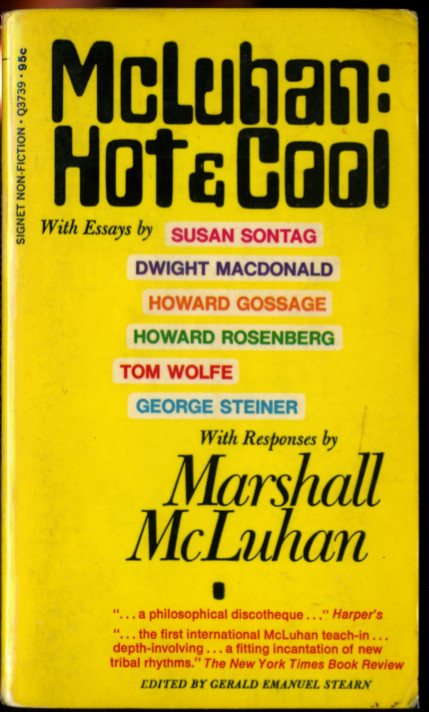Timothy Lenoir (ed.): Inscribing Science: Scientific Texts and the Materiality of Communication (1998)
Filed under book | Tags: · cartography, communication, germany, history of science, information, materiality, photography, science, semiotics, technology

Early practitioners of the social studies of science turned their attention away from questions of institutionalization, which had tended to emphasize macrolevel explanations, and attended instead to microstudies of laboratory practice. Though sympathetic to this approach—as the microstudies included in this book attest—the author is interested in re-investigating certain aspects of institution formation, notably the formation of scientific, medical, and engineering disciplines. He emphasizes the manner in which science as cultural practice is imbricated with other forms of social, political, and even aesthetic practices.
This book offers case studies that reexamine certain critical junctures in the traditional historical picture of the evolution of the role of the scientist in modern Western society. It focuses especially on the establishment of new disciplines within German research universities in the nineteenth century, the problematic relationship that emerged between science, industry, and the state at the turn of the twentieth century, and post-World War II developments in science and technology.
After an Introduction and two chapters dealing with science and technology as cultural production and the struggles of disciplines to achieve legitimation and authority, the author considers the following topics: the organic physics of 1847; the innovative research program of Carl Ludwig as a model for institutionalizing science-based medicine; optics, painting, and ideology in Germany, 1845-95; Paul Ehrlich’s “magic bullet”; the Haber-Bosch synthesis of ammonia; and the introduction of nuclear magnetic resonance instrumentation into the practice of organic chemistry.
Publisher Stanford University Press, 1998
Writing Science series
ISBN 0804727775, 9780804727778
476 pages
Walter Lippmann: Public Opinion (1922/1997)
Filed under book | Tags: · communication, democracy, information, public, socialism

In what is widely considered the most influential book ever written by Walter Lippmann, the late journalist and social critic provides a fundamental treatise on the nature of human information and communication. As Michael Curtis indicates in his introduction to this edition, Public Opinion qualifies as a classic by virtue of its systematic brilliance and literary grace.
The work is divided into eight parts, covering such varied issues as stereotypes, image making, and organized intelligence. The study begins with an analysis of “the world outside and the pictures hi our heads,” a leitmotif that starts with issues of censorship and privacy, speed, words, and clarity, and ends with a careful survey of the modern newspaper. The work is a showcase for Lippmann’s vast erudition. He easily integrated the historical, psychological, and philosophical literature of his day, and in every instance showed how relevant intellectual formations were to the ordinary operations of everyday life.
The field of public opinion research has produced much since this 1922 classic, but no work is more compelling in its argument or lasting in its impact. Lippmann’s conclusions are as meaningful in a world of television and computers as in the earlier period when newspapers were dominant. Public Opinion is of enduring significance for communications scholars, historians,- sociologists, and political scientists.
Originally published in 1922.
This edition originally published in 1992 by The Macmillan Company
With a New Introduction by Michael Curtis
Publisher Transaction Publishers, New Brunswick, New Jersey; London, 1998
Publisher Transaction Publishers, 1997
ISBN 1560009993, 9781560009993
427 pages
wikipedia
publisher
google books
Gerald Emanuel Stearn (ed.): McLuhan: Hot & Cool: A Primer for the Understanding of & a Critical Symposium with a Rebuttal by McLuhan (1967)
Filed under book | Tags: · global village, information, literacy, mass media, media theory, photography, print, radio, semiotics, speech, technology, television, text, writing

“A brilliant amalgam of articles, discussions, essays and interviews with and about the Pop Oracle himself, The Complete McLuhan: the most controversial thinker of the electronic age.” (from the back cover)
With essays by Howard Luck Gossage, Tom Wolfe, John Culkin, SJ., Dean Walker, Kenneth E. Boulding, George P. Elliott, Rudolph E. Morris, Walter Ong, SJ., Ammunition (C.I.O.), William Blissett, Harley Parker, Robert Shafer, John Freund, Patrick D. Hazard, Dell Hymes, Frank Kermode, A. Alvarez, Dan M. Davin, Raymond Williams, Harold Rosenberg, Dwight Macdonald, Christopher Ricks, Jack Behar, Ben Lieberman, John M. Johansen, George Steiner, Jonathan Miller, Andrew Forge, Benjamin DeMott, Susan Sontag; responses by Marshall McLuhan; and an interview by Gerald E. Stearn with McLuhan.
Publisher The Dial Press, New York, 1967
Signet Non-Fiction series, Q3739
312 pages
PDF (no OCR)
Comment (1)
